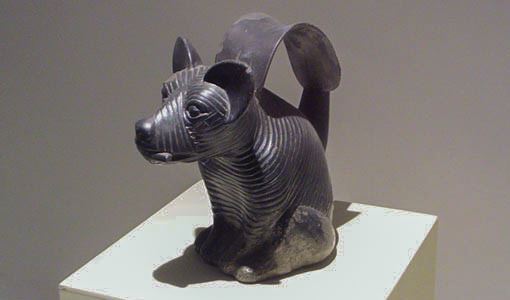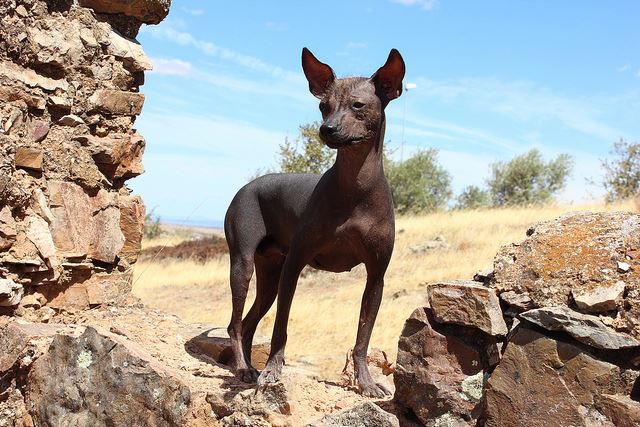Facts about the Peruvian Hairless Dog
It’s not often in this day and age that one hears a good news story about the preservation of indigenous ways of life, but this tale from Peru will certainly have you smiling. But before we start the story, let’s meet the main protagonist…
Vital statistics
As the name suggests, the Peruvian Hairless Dog is almost completely bald – a few tufts of measly hair usually sprout from its head and feet as well as from the tip of its tail. Its skin can be brown, gray or coppery and is often mottled with pink spots. Its size varies quite a bit: dogs can weigh as little as 9lbs and as much as 55lbs. Interestingly, the genes that cause hairlessness also result in Peruvian Hairless Dogs often having fewer teeth than other breeds.
Pre-Inca man’s best friend
Most people think of Peruvian Hairless Dogs as an Inca breed, but they’re actually even older than that. Ceramic artefacts depicting the dogs have been traced to the Moche culture and dated at about 750AD. Because of their hairlessness they’re not suited to life in the High Andes (another reason they’re not really Inca dogs) and have always lived in Peru’s coastal belt…and, with the help of a few blankets, in the lower reaches of the Andes.

The Moche, Chancay, Chimu and (coastal) Incas used the dogs for hunting and as pets and they also afforded mystical significance to the dogs, even going so far as to honor them with thoughtful burial rituals. “The dogs were buried in their own space,” explains bio-archaeologist Sonia Guillen, “They were wrapped in textiles and they had a bit of fish put on top of the snout, as a way to send them to the other life with covering and food.”
Laughing stock of the Spanish
The dogs’ fate (not to mention that of their owners) did an about turn with the arrival of the Spanish conquistadores. The Spanish brought giant war dogs with them and took great enjoyment in unleashing these beasts on a pack of “grotesque” Peruvian Hairless Dogs. A single Spanish dog could easily rip four or five of the smaller hairless dogs to pieces in a single session.

The stigma persisted long after the Spanish had ceded control of Peru and the dogs became feral, roaming the coast for whatever scraps they could find. The dogs were at best scorned by the locals, at worst hunted by them. Their future was bleak.
Protected by law
In the late 1980s, inspired by research into the historical importance of the Peruvian Hairless Dog, the Peruvian government decided to do something to protect the species. Huaca Pucllana (the famous adobe pyramid in downtown Lima) installed a breeding pair on its grounds, and soon afterwards the government decreed that every coastal archaeological ruin in the country should have at least one pair of the dogs.
The initiative worked – not only did the population of Peruvian Hairless Dogs increase, but their reputation also improved. So much so that they are the national dog of Peru and Peru’s only globally recognized breed standard.
There is also a North American variant (bred from Peruvian stock) called the Peruvian Inca Orchid.
The perfect pet?
Once you get over their slightly unconventional appearance, there is a lot to recommend the Peruvian Hairless Dog. Because of their hairlessness the dogs radiate heat: Inca royalty took the dogs to bed with them as a kind of hot water bottle and today they are a popular pet for people with arthritis. Add this to the fact that they don’t get fleas, they’re hypoallergenic and they don’t shed fur, and you may just have found the perfect pet.
Good luck getting your hands on one though: there are only a thousand Inca Orchids in the USA and the Peruvian government doesn’t look kindly on people taking its patrimony to foreign shores...